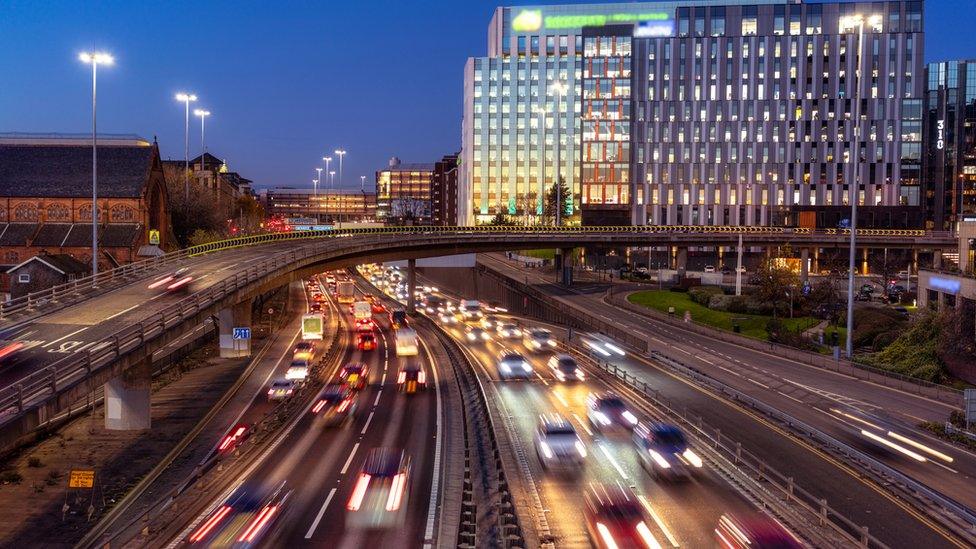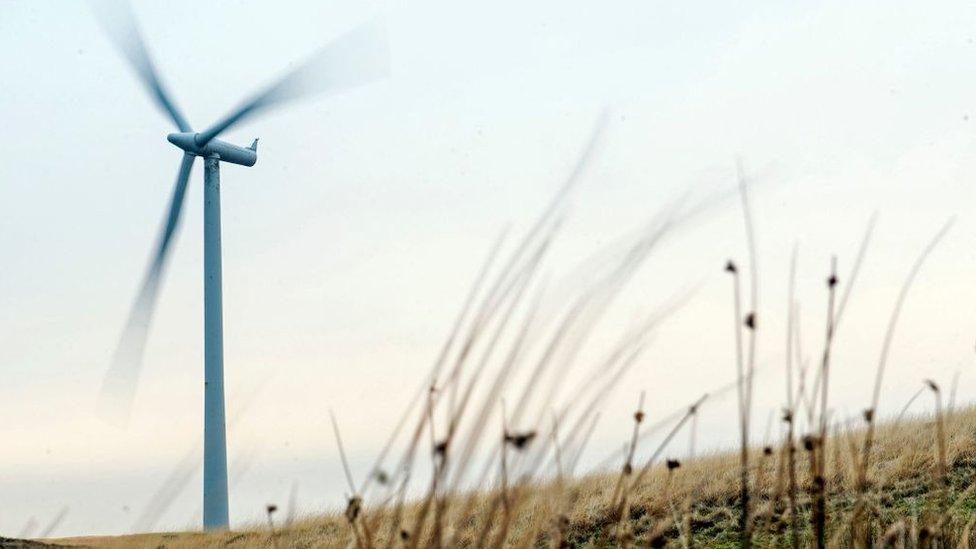Scotland misses greenhouse gas emissions target
- Published
- comments

Domestic transport was the biggest source of emissions
Scotland's target for cutting planet-warming greenhouse gas emissions has been missed after a bounce back following the pandemic.
Total emissions were 49.9% lower in 2021 than in 1990 but the target for the year was a 51.1% cut.
It is the eighth time in 12 years that the legally binding target has been missed.
The Scottish government said it was disappointed but that it was "not far behind" where it should be.
Domestic transport was still the biggest source of emissions and was responsible for 26.2% of the total.
Emissions in 2020 had dropped sharply because lockdown measures shut large sections of our economy and we were able to travel much less.
While the figure for transport saw a jump of more than 10%, emissions from cars were still 17.5% lower than 2019, the year before the pandemic.

Domestic aviation remained the same as 2020 but was half the levels of 2019, although this still accounted for just a fraction of total transport emissions.
Agriculture narrowly overtook business as the second largest source of emissions.
The figures are calculated using seven different greenhouse gases including carbon dioxide and methane.
Emissions from the energy sector, business and international aviation and shipping have all fallen.
The energy supply sector saw another significant drop in emissions of around 9.2% which mean that since 1990 - the baseline year - they fell 77.6%.
The figures attribute the latest fall to a drop in the use of fossil fuels for electricity generation.

While power from renewables fell sharply because there was less wind, the contribution from nuclear grew but the figures do not reflect the closure of Hunterston B nuclear power station in January 2022.
The Scottish government insisted the target had been missed "narrowly" by just 1.2 percentage points and did not reflect the policies introduced under its updated climate change plan in March 2021.
It said that while the change will be driven by government it cannot happen without the contributions of individuals, communities and businesses.
Net Zero Secretary Mairi McAllan added: "As the real life impacts of climate change become increasingly clear, we must go further and faster, and we will be introducing a draft of our new climate change plan later this year, which will contain even greater ambition while steering our emissions reduction pathway out to 2040."
The total emissions for 2021 were the equivalent of 41.6 million tonnes of carbon dioxide.
A growth area was in waste incineration which contributed 19% of the total emissions from electricity generation.
That is expected to rise further in future years as more "energy from waste" plants begin operating.
Residential emissions also grew by about 7% from 2020 to 2021 because colder winter temperatures at the start of the year meant we were burning more fuel to heat our homes.

Power from renewables fell sharply because there was less wind
The Stop Climate Chaos Coalition has called for "bold new action" to drive down emissions in the worst polluting areas like transport.
It describes 2020's figures as a "hollow success" as a result of the pandemic lockdowns.
Chairman Mike Robinson added: "Every missed target means more effort is required the following year, making it harder to meet our crucial goals."
Scottish Labour's net zero spokesperson Sarah Boyak accused the SNP of "empty rhetoric and broken promises".
Liam Kerr, of the Scottish Conservatives, said it was "particularly galling" that the emissions target was missing in the year the COP26 climate summit was in Glasgow.